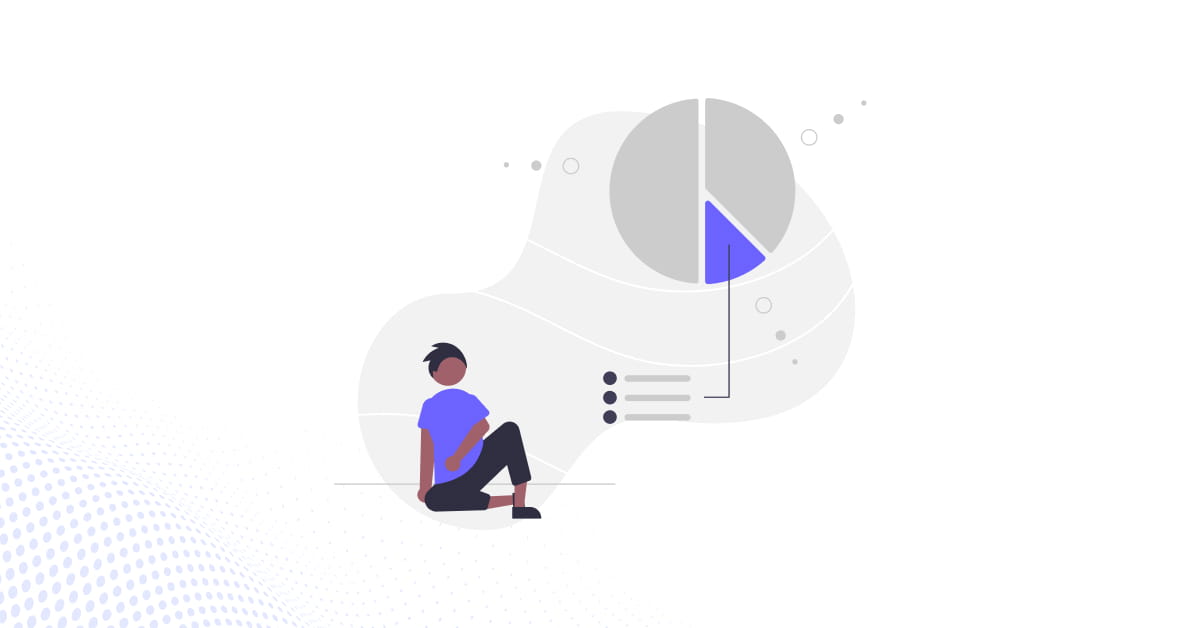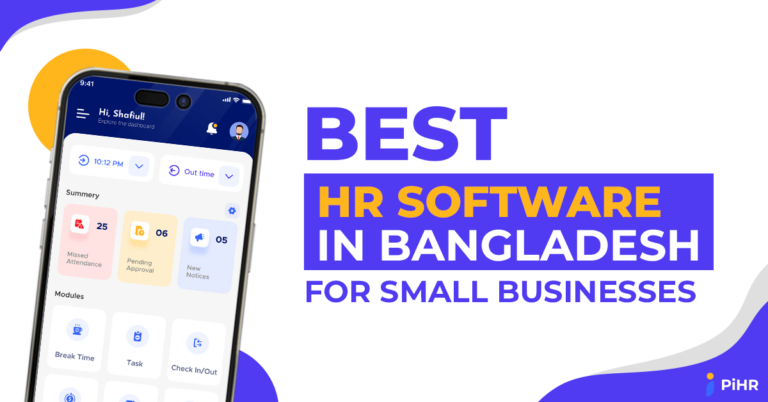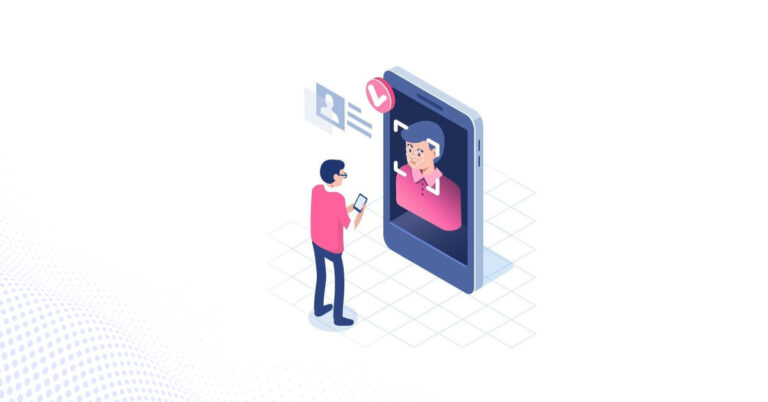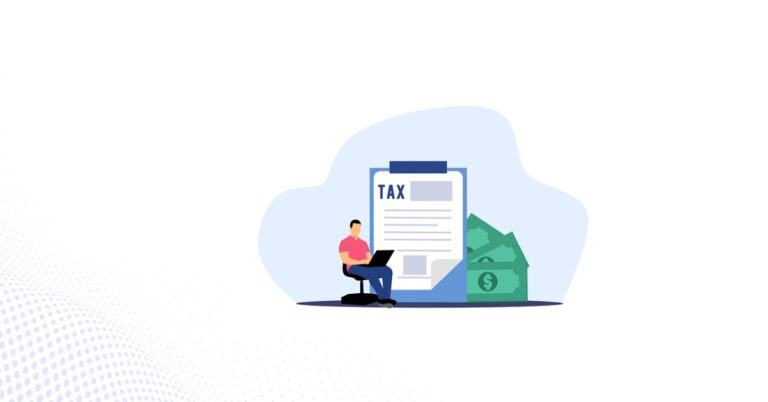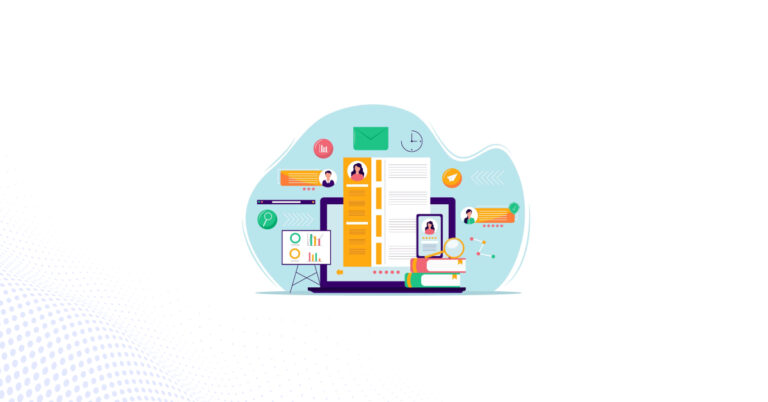Human Resource is a vast department with enormous responsibilities that are no more confined to the back office and limited to paperwork. Owing to the internet and the rapidly increasing technological advancements, Human Resources has become a tech-savvy department.
It has taken up cloud-based HR solutions to deal with the onboarding and offboarding activities, recruitment processes, management time-off, and so much more.
The HR department usually remains hyperactive. Thanks to the introduction of cloud-based HR management software that has significantly simplified administrative tasks. The goals of human resource management are to ease the administration processes and organize the workflow while keeping track of the company’s operations and employee records.
The department of human resources carries huge responsibilities. It, thus, increases the necessity of the usage of appropriate tools to help simplify their tasks and maintain a natural workflow while reducing the pressure at work.
That being said, the cloud-based HRMS plays a significant role in achieving these goals. This page focuses on how they do what they do and why you should opt for it.
What is Cloud-based HR Software
Like any other cloud-based system, a cloud-based HR software merges the data for centralized platforms and allows you to have better, quicker, and more efficient HR management. You would find certain cloud-based HR management system software with specific functionality.
Usually, the software with payroll systems or recruitment systems is popularly used as the overall cloud-based HR system handling almost all the HR processes. These systems enable you to manage each and every administrative task, from handling payrolls to training the workforce while saving enough time and energy.
Considering the dynamic nature of the legal requirements, modern HR demands are increasing rapidly. This mounts pressure upon the HR operational teams who need to deal with significant cost wastages.
More and more businesses are attributing to the Human resource department for significant cost savings and success. Therefore, such responsibilities and expectations call for efficient management in companies which is possible through the comprehensive implementation of cloud-based HR systems.
Necessary Features to be Considered in Cloud-based HR Management Systems
You will find a plethora of HR management tools in the market catering to the different human resource department goals.
However, an ideal HR solution caters to a particular set of facilities of the HR department. Here are the essential features to find in a perfect cloud-based HR software.
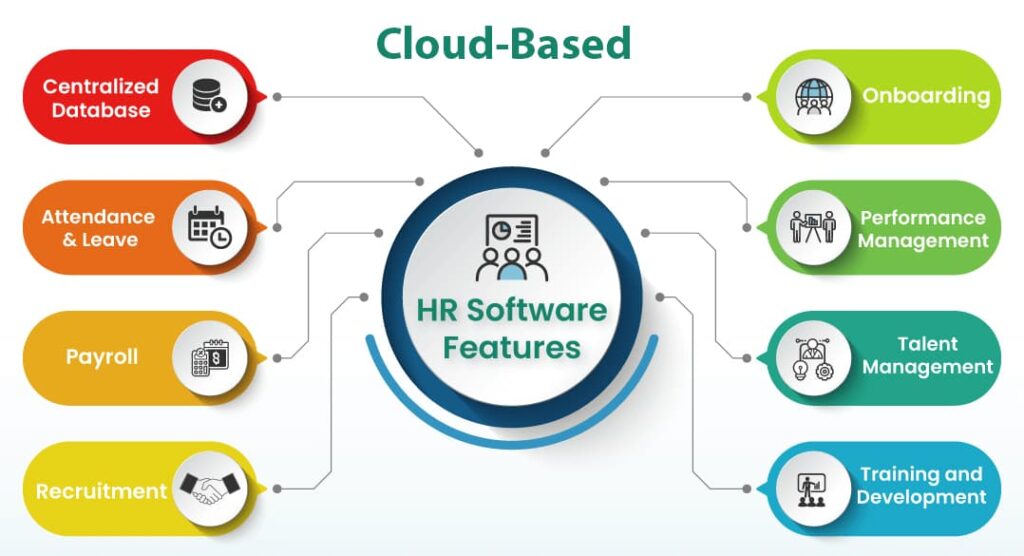
Human Resource Department Goals of Using Cloud-Based HRMS
The human resource department is transforming into a seamless facility of accessibility, management, and regulations. Thanks to the cloud-based platforms that are significantly contributing towards fulfilling the goals of human resource management.
Here are some of the crucial goals that the cloud-based HR management systems help the department fulfill effortlessly.
1. Improve the Recruiting Function
One of the primary functions of the HR department is recruitment and onboarding. Recruitment processes involve heavy data, such as resumes, interviews, collation of interview feedback, etc. Although resumes have been managed through software applications for years, the other processes were still handled manually.
With such a necessity to improvise on the errors, mix-ups in paperwork, and out-of-sync situations, the cloud-based systems have come in with a big hit to elevate the department of human resources.
2. Data Availability to Remote Workers
Remote employees work from different locations of the globe and accordingly follow different time zones. Therefore, they need to access and update the files and documents according to their convenience. It can pertain to leave or travel requests, attendance records, training schedules, goal achievements, etc.
A cloud-based system helps them maintain these records over various effective software tools that ease the processes of HR administration.
3. Seeing Data at a Glance
Insufficient blocks of information can disrupt decision-making processes. This is a prevailing situation when activities aren’t in sync while managing the operations manually.
However, an HR system accumulates the data in one platform and enables access to it anytime and anywhere.
You can review and retrieve those data whenever you need it in a few clicks and deeply analyze them, identifying relevant trends and problems.
Features of cloud-based HR management systems catering to these matters are HR reporting, training records, audit trails, etc.
4. Monitoring Leaves and Absences
Sometimes, when employees catch you off-guard with sudden leave or sick leave requests, handling the time-consuming email trails can be daunting.
Instead, let the software tools handle the mess efficiently and keep it organized, making it easy for you to follow up later. Such software tools are efficiently known for their absence, leave, and payroll management facilities.
5. Security
The major organizations always prioritize security in terms of SaaS HR solutions. They need to store sensitive information and files of remote employees for valid reasons.
A cloud-based HR management system ensures role-based access and data encryption. This restricts unauthorized access to confidential documents while only those who are granted access can view or change them.
6. Increased Business Agility
One of the main reasons why businesses use cloud-based HRMS is increased business agility. Cloud-based software can easily facilitate agility and adaptability. Cloud-based HR systems can allow you to flatten hierarchies, and foster strong cross-functional collaborative relationships in the workplace. Not to mention, using cloud-based HR makes the business a lot more scalable.
This results in rapid and continuous improvement within the workplace, leading to a shift in the work culture, and resulting in increased business agility.
7. Absence Management
If you want to keep track of all your absences, leaves, entitlements, etc, you need to invest in a cloud-based HR management system. Companies who opt for cloud-based HRMS always want an easier solution to absenteeism management. You won’t need long and manual spreadsheets to keep track of attendances or leaves anymore.
This is extremely beneficial because all of our data regarding employee leaves and absences will be in one place, and it will be safe on the cloud. This data will be easily accessible on the cloud for you to cross-reference whenever you need it.
Attendance management software recently has been surging in popularity because it makes absence management so much easier for companies.
8. Reduced HR costs
Cost considerations are one of the most important things to look into for businesses. One of the major goals of cloud-based HR software is to ensure that businesses can have a cost-effective solution for HR management.
Cloud-based software won’t require you to constantly switch up and update hardware and software. Usually, hardware can be very expensive. However, with cloud-based software, you opt for a subscription-based model, which requires overall less expenses.
The up-front costs are much less because there are different payment plans and options available, hence you can start small if you are running a small business. Additionally, maintenance costs are also much lower. Typically you are only paying for upgrades if you need them, otherwise the cost stays the same depending on how much the subscription renewal costs
9. Reporting
A key goal of HRMS is generating reports by analyzing employee data and coming up with actionable insights. Integrated HR management systems usually have a unified reporting software with a common dashboard that allows you to complete tasks and generate reports while also managing data.
Having HR reporting software can help your company through several avenues. It allows for better decision-making, increases employee productivity through employing actionable insights based on objective metrics, and also improves compliance.
Different types of reports can be generated through cloud-based HR management systems. You can have performance reports, payroll reports, turnover and recruitment reports, etc. These different kinds of reports are difficult to generate manually and take up a lot of space.
That’s why a key goal of cloud-based computing is to ensure reporting becomes easier and seamless, for the benefit of the company.
10. Rapid HR Innovation
There cannot be rapid innovation without giving in to the rapid technological revolution that is currently happening. Software, AI, and cloud computing have the power to do a plethora of tasks that were previously only done by humans. There is no limit to how much cloud computing can make lives easier for everyone.
Harnessing the power of AI and cloud computing opens exponentially more doors for innovation. As software keeps on developing, integrating it with AI tools, machine learning, and cloud computing, will ultimately lead to rapid HR innovations, with new and improved solutions for old HR problems.
Cloud computing provides innovative ways to improve many HR issues, starting from reduced paperwork, to innovative attendance tracking software, employee management, to improved security and predictive analyses.
This levels the playing field between startups and big corporations, because now they both have the same access to automation and technology thanks to cloud-based HR management systems.
11. Customer Success
HRMS seeks to improve companies’ relationships with customers through customer relationship management strategies. You can leverage cloud-based HR management systems’ technologies for customer success. Cloud-based HRMS provides an agile and scalable infrastructure that can be streamlined for continuous improvement, eventually leading to strong customer relationships.
Using powerful analytics tools with the help of cloud-based HRMS, you can deliver personalized experiences for customers by tracking customer satisfaction, and interactions, and managing sales.
What are Some Examples of Cloud HR Software
Some of the best and most widely used cloud HR software are PiHR, Paychex, Bonusly, and BambooHR.
Paychex allows you to easily manage your payroll and benefits without incurring large amounts of costs. Additionally, their integrated software allows you to have size-based solutions. You can also have one-on-one consultations with their HR experts for a full personalized experience.
Bonusly has an integrated system which is great for employee management. This software helps you create innovative plans for employee retention, including providing incentives for attendance. You can also breakdown employee performance, while also integrating with HRIS.
BambooHR can help you handle Payroll, HR, and employee management. Starting from recruitment and onboarding to workflows and approvals, BambooHR has solutions for everything.
One of the best and most well-performing cloud-based HR software is PiHR. PiHR is trusted by over 400 companies for HRMS-related issues. PiHR software boasts a plethora of features, and all of them are useful for companies of all sizes. Whether you need to track employee attendance or leave management, PiHR has you covered.
Additionally, they have thirteen distinct features that tap into different areas of HR. From tax management to face recognition to security, notifications, and payroll, there isn’t an aspect of HR that PiHR software doesn’t cover. For more information and to get started with PiHR today, visit our website.
FAQ
How do I choose an HR system?
You need to keep a number of factors in mind. You should look at its features, functionality, and whether or not it can integrate with your existing software. You also need to consider its pricing, the reputation and reliability of the vendor, along with its security features and data compliance. There are many factors at play here, which are all important.
How much does an HR cloud solution typically cost?
Depends on the software you are using. HR software can cost anywhere between $3 to hundreds and thousands of dollars a month. This will depend on the type of software you are buying, the company, the pricing plan you are opting for, etc.
How HR Cloud Customers are Making Their Life Easier?
HR cloud makes customers’ lives easier through a plethora of ways. You have increased security, accessibility, productivity, low cost, scalability, and innovative solutions.





